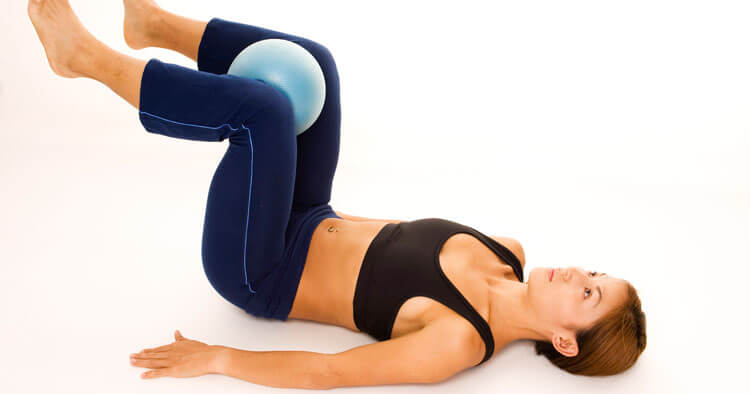Core Stability Physiotherapy at Sydney Physio Clinic
Looking for improved performance and reducing risk of injury? Core stability physio exercises and training can play a key role in improving performance in sport and functional movement. Depending on requirements, core stability physio exercises may take on a different focus – exercises can include static or dynamic postures. Where the focus may be on building strength, power, endurance or directed at the speed, timing and balance of muscle contractions.
Postural Verses Dynamic Muscles
One way of classifying muscles is based on their function. Breaking them up into being either postural, or dynamic muscles is one such method of classification. Postural muscles are generally your local muscles, muscles acting to provide stability to an area. Dynamic muscles are more global muscles, traveling greater distances across joints and acting to help generate movement. Without these local postural muscles “doing their job” your body doesn’t have a solid platform from which the dynamic muscles can act.
Core stability physiotherapy work is looking at targeting these postural muscles. Improving their strength and coordination of action. Doing so in an attempt to help create a stable platform for your body to operate from. No different to building a house and laying down strong foundations. Without these strong foundations the house will not last the distance, and quickly issues with arise.
Core Stability Physiotherapy Exercises Provide A Stable Base
Your spine is an unstable area by design. Some medicos liken the spine to a stack of cotton reels all lined up, one on top of each other. Your lower back comprises of five of these cotton reels. All stacked up on top of a triangular bone of your pelvis, called the sacrum. The sacrum is wedged in either side between the other pelvis bones.
One of the challenges for the spine is that the vertebrae of your lower back need to allow movement. However they also need to provide a solid base for your lower body and upper trunk and extremities to work from. This is where your core muscles come into play. Without a strong core, these cotton reels would fall in a heap on the floor. Core stability physio exercises, and having optimum core strength is vital to the dynamic control and support of your spine.
A strong base of support is crucial to the ability to perform even the simplest of tasks. This is because core muscle activation precedes all activity. With co-contraction of your core muscles occurring prior to any movement of your limbs.
What Muscles Should You Focus On?
When most people think core stability, they think of the abdominals, specifically the deep abdominals. Your deep trunk muscles include the transverses abdominis, multifidus, internal oblique, para-spinal muscles and the pelvic floor. All of which are key to the support of your spine. Co-contraction of these muscles produces forces via the thoracolumbar fascia and intra-abdominal pressure mechanisms. Working to provide stabilization and resisting undesirable forces acting on the lumbar spine.
These abdominal and trunk muscles are not the extent of your core. Your core can be considered to involve several other muscles, including your hip abductors, hip flexors and gluteal muscles. All these muscles help play an important role in trunk stability. Crucial in maintaining both static and dynamic postural control. For any core stability program to be effective, it must address both the contribution of and any weakness in these muscles groups. Not simply thinking about your abs.
How Best To Train Your Core Muscles
Training for improving the function of your core muscles must be task specific. Considering any positions that stability is required, as well as the type of contraction required. Your core muscles are not as much there to help generate gross movement, as they are to stabilise. Stabilizing your trunk and providing the foundation for movement during day-to-day movements, sports, as well as during heavy DIY activities. As such, appropriate strength and muscle endurance is key to any successful core stability physiotherapy program.
Good Core Strength Is Not Just Doing Lots Of Crunches
It is not enough to just do sit-ups or crunches. Abdominal muscles make up just part of your core. Muscular control and stability around the lumbar spine and pelvis are maintained by coordinated activation and control of a number of muscles. All these muscles play their own part in helping stabilize the region.
Any core stability physiotherapy program must focus first on the assessment of posture and movement. Followed with the appropriate training of trunk muscles. Addressing the timing, activation, strength, and endurance of the necessary muscles. In an attempt to providing a strong platform from which your body can function.
Benefits of Core Stability Physio Training
Research has shown that individuals with chronic low back pain have weaker core muscles. And that back pain can cause your stabilising muscles to “switch off”. Weak and/or unbalanced core muscles can be linked to low back pain. Whereas strong “core muscles” can actually reduce stress on your spine and create a stable base to operate from. Athletic performance is frequently improved by an increased ability to generate power. The more stable your core, the more power you can generate and subsequently transfer to your limbs.
Weak core muscles can result in the loss of the desired lumbar curve during static and dynamic positioning. A stronger, more balanced core helps maintain the appropriate spinal position and posture. And corrects postural imbalances that can lead to pain and injury.
Book an appointment with a leading physiotherapist in Sydney CBD today.!
Get in touch with Sydney Physio Clinic for a treatment session with our knowledgeable physiotherapists at our Macquarie Street location in the heart of Sydney CBD

















